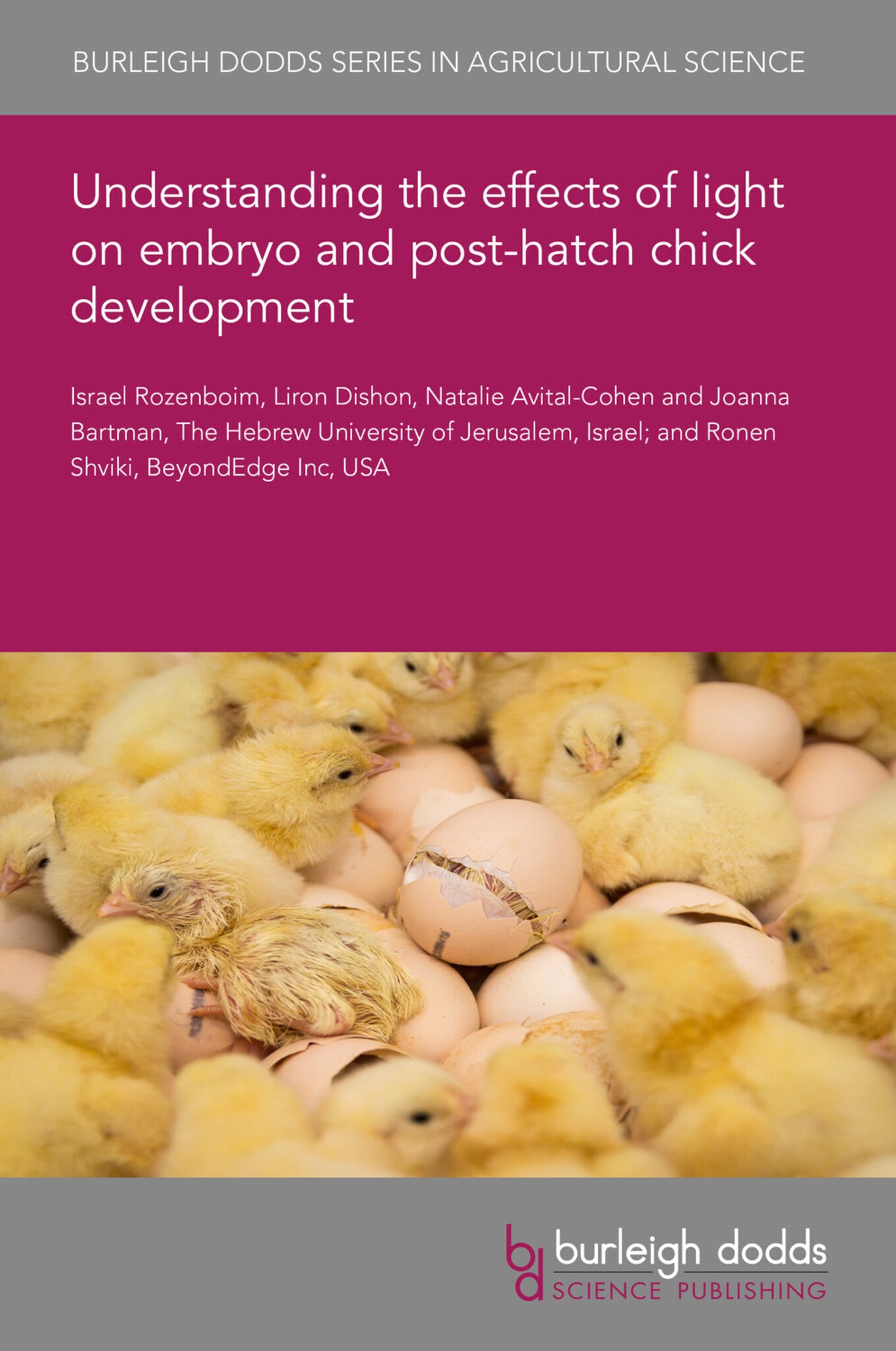We're sorry. An error has occurred
Please cancel or retry.
Understanding the effects of light on embryo and post-hatch chick development

Some error occured while loading the Quick View. Please close the Quick View and try reloading the page.
Couldn't load pickup availability
- Format:
-
29 May 2023

Targeted illumination manifested by source, spectra, intensity, brightness and regimen became major factors in modern poultry management. Light spectra affect growth in meat type birds both in ovo and post hatch. Broilers and turkeys in ovo photostimulated with green light (GL) gained significantly more weight than birds incubated under dark conditions. This chapter defines the cellular and molecular mechanism behind this effect. In ovo photostimulation have a stimulatory effect on the proliferation and differentiation of satellite cells and a uniformity of muscle fibers, by direct effect on embryo's somatotropic axis activity, resulting muscle growth. In a recent study, we found that in ovo GL photostimulation can be done during hatching period only with same growth acceleration results. The chapter suggests that embryos are highly sensitive to GL photostimulation a phenomenon that can be a tool for acceleration of muscle growth in meat type birds.

TECHNOLOGY & ENGINEERING / Agriculture / Animal Husbandry, Poultry farming, TECHNOLOGY & ENGINEERING / Agriculture / Sustainable Agriculture, Sustainable agriculture, Agricultural science

- 1 Introduction
- 2 The role of monochromatic light on growth of meattype birds
- 3 The effect of in ovo green light photostimulation on somatotrophic axis activity in embryos and post-hatch
- 4 Conclusion
- 5 References



